Discover the hungarian capital
The Danube runs like a lifeline through the Hungarian capital, and many sights lie on its banks. In Buda, on the west side, the rocky Gellért Hill is worth a walk. Visit the Liberty Statue and the Citadella. Towards the Danube, at the foot of the hill stands the Hotel Gellért with the famous Art Deco thermal bath, which is an attraction with a relaxing factor.
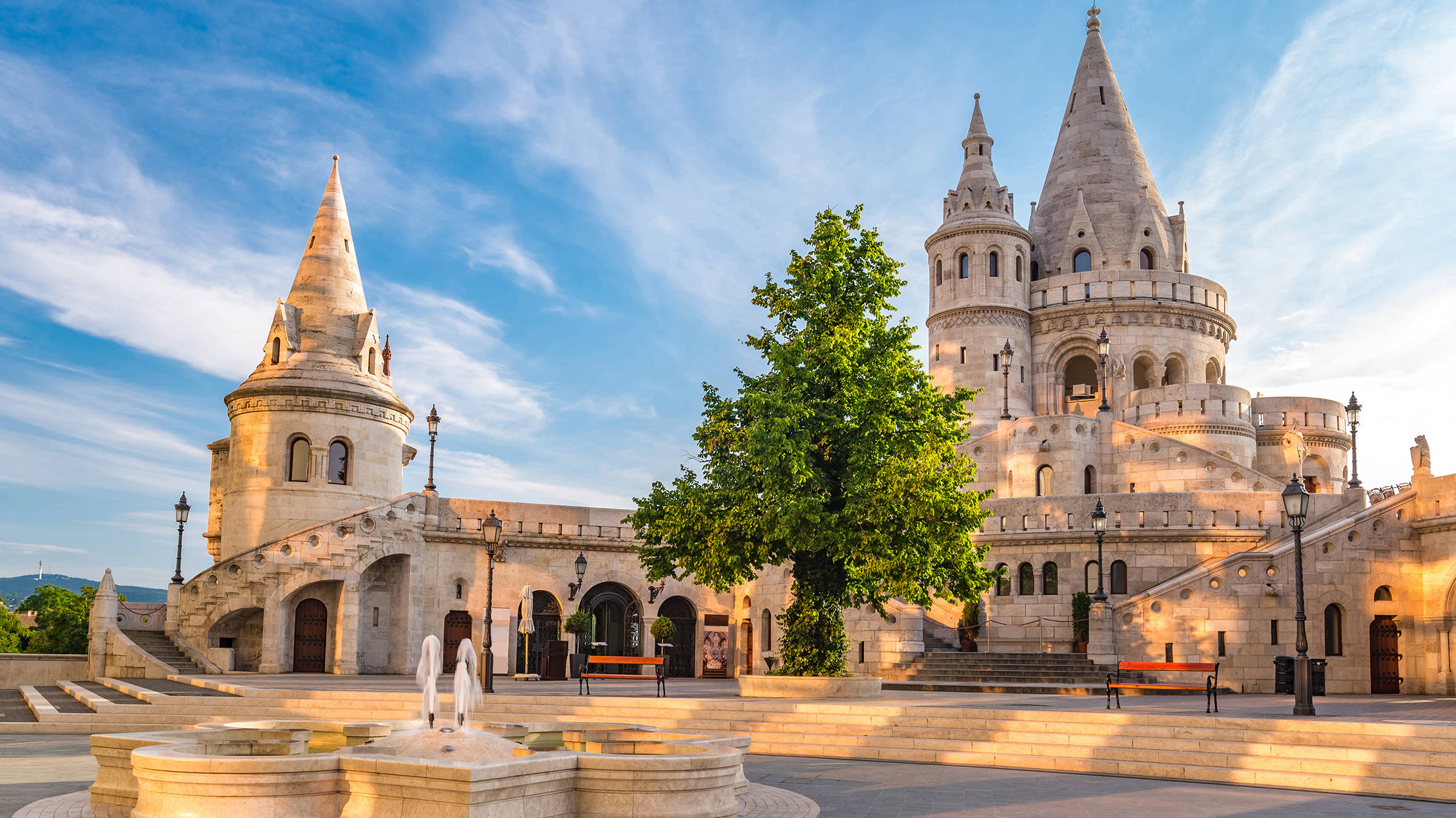
Inner courtyard of the Fishermen’s Bastion
North of Gellért Hill rises the castle hill with the oldest part of the city, the Castle District, which is a UNESCO World Heritage Site. These include the Buda Castle, the Fishermen’s Bastion and the Matthias Church. The decorative end of the castle complex facing the river is the Castle Garden Bazaar with walkways, gardens and exhibition areas. The Danube as an attraction that shapes the cityscape is spanned by nine bridges. The oldest and most famous is the Chain Bridge in front of the castle hill, which has become a landmark.
On the other hand, the Danube bank is characterised by the Hungarian Parliament Building, the Academy of Sciences, the Corvinus University of Economics, the National Theatre and the Ludwig Museum of Modern Art. From the H2 Hotel Budapest you can easily walk to explore this part of the city. It is only about 500 meters to the river. Stop for a moment at the "Shoes on the Danube Bank" monument and take a look at the empty shoes as a reminder of the Jewish pogroms of the Second World War.
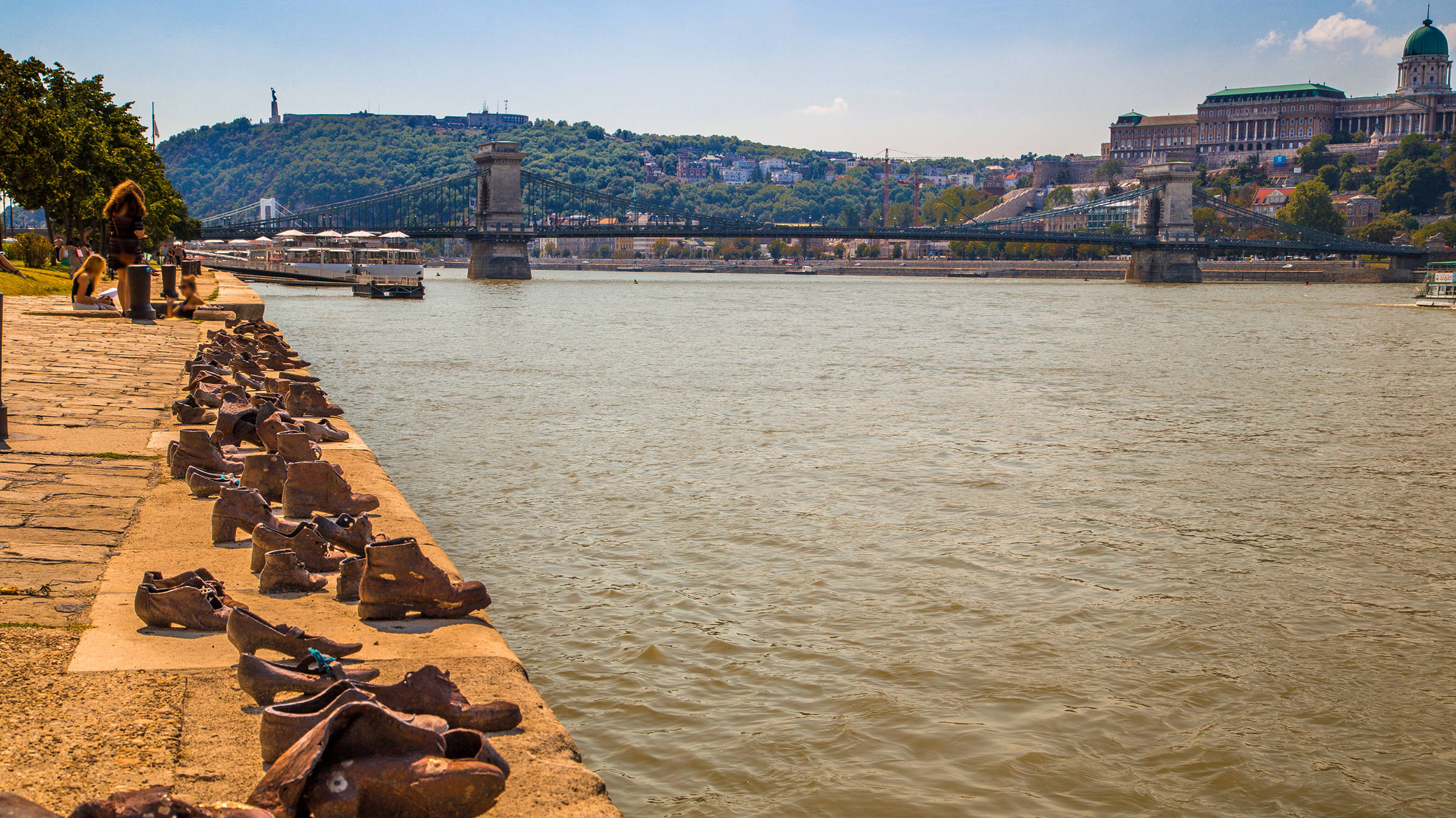
"Shoes on the Danube Bank"
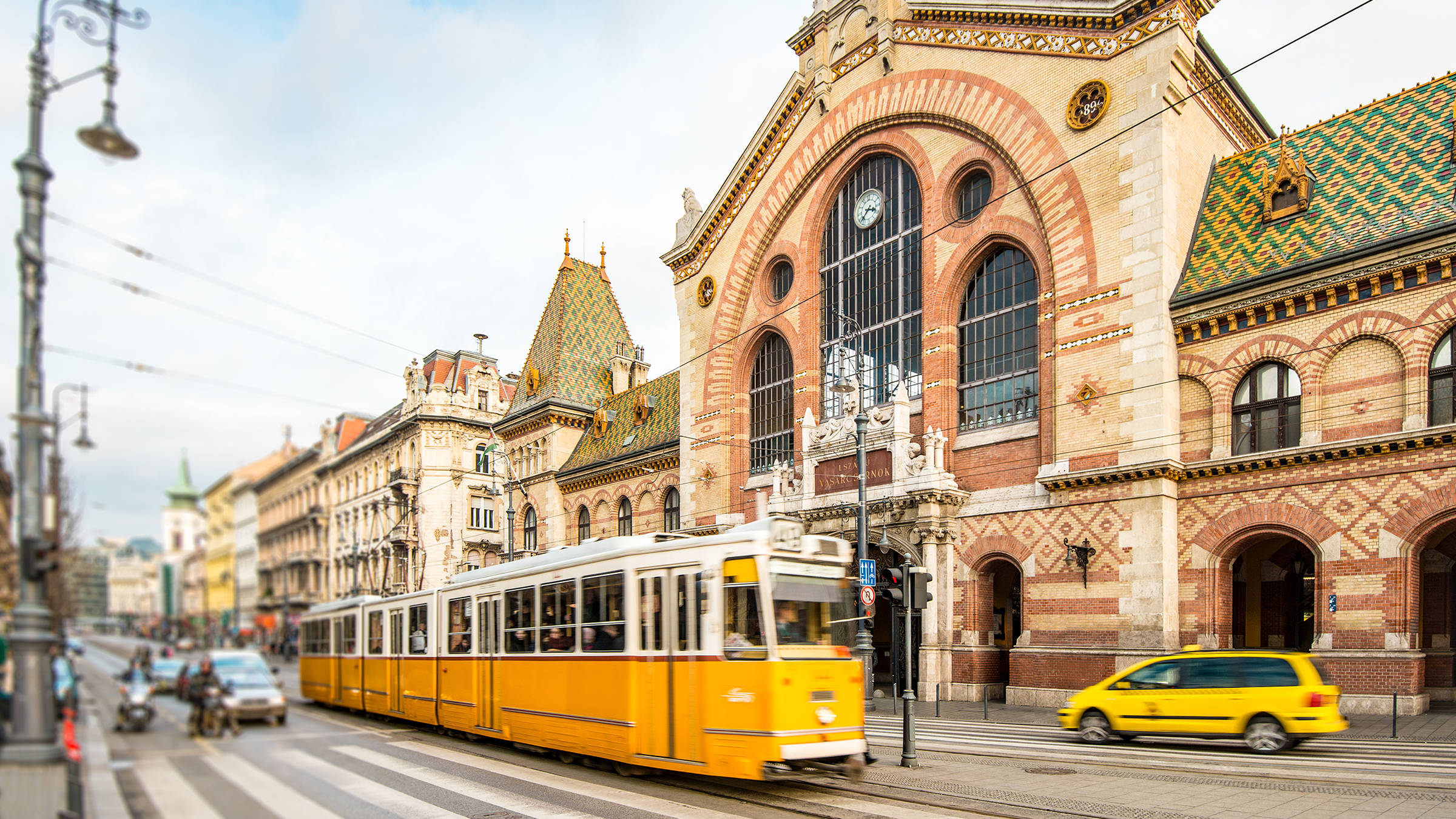
Great Market Hall
Also very close to the H2 Hotel Budapest rises the imposing St. Stephen's Basilica from the 19th century – Budapest’s highest church. Nearby is also the 3D Gallery Budapest, a very special art museum, which includes the visitor in the works and thus offers funny photo motifs. The Great Synagogue in Dohány utca, the Hungarian National Museum and the neo-Gothic Great Market Hall, which regularly hosts a farmers’ market and sells souvenirs, are located close to each other on the so-called Little Ring. Parallel to the shore runs Váci street, the oldest trade route and today a low-traffic promenade of the city, in which all major fashion labels are represented.
A little south of “Hősök tere”, the square of 56 with its wedge-shaped memorial commemorates the popular uprising of 1956, which was crushed by the Soviet army; the town park joins to the east. The Vajdahunyad Castle, the Zoo and the famous Széchenyi thermal bath, built in 1896 for the Millennium Exhibition, await you here. A walk on Margaret Island between the two halves of Buda and Pest also offers peace and a little relaxation away from the hustle and bustle of the city.
Those who have a little time should not miss Szoborpark, also called Memento Park, in the southwest of the city. Opened in 1993, it contains a collection of socialist monuments, slightly ironically redesigned by Ákos Eleőd.
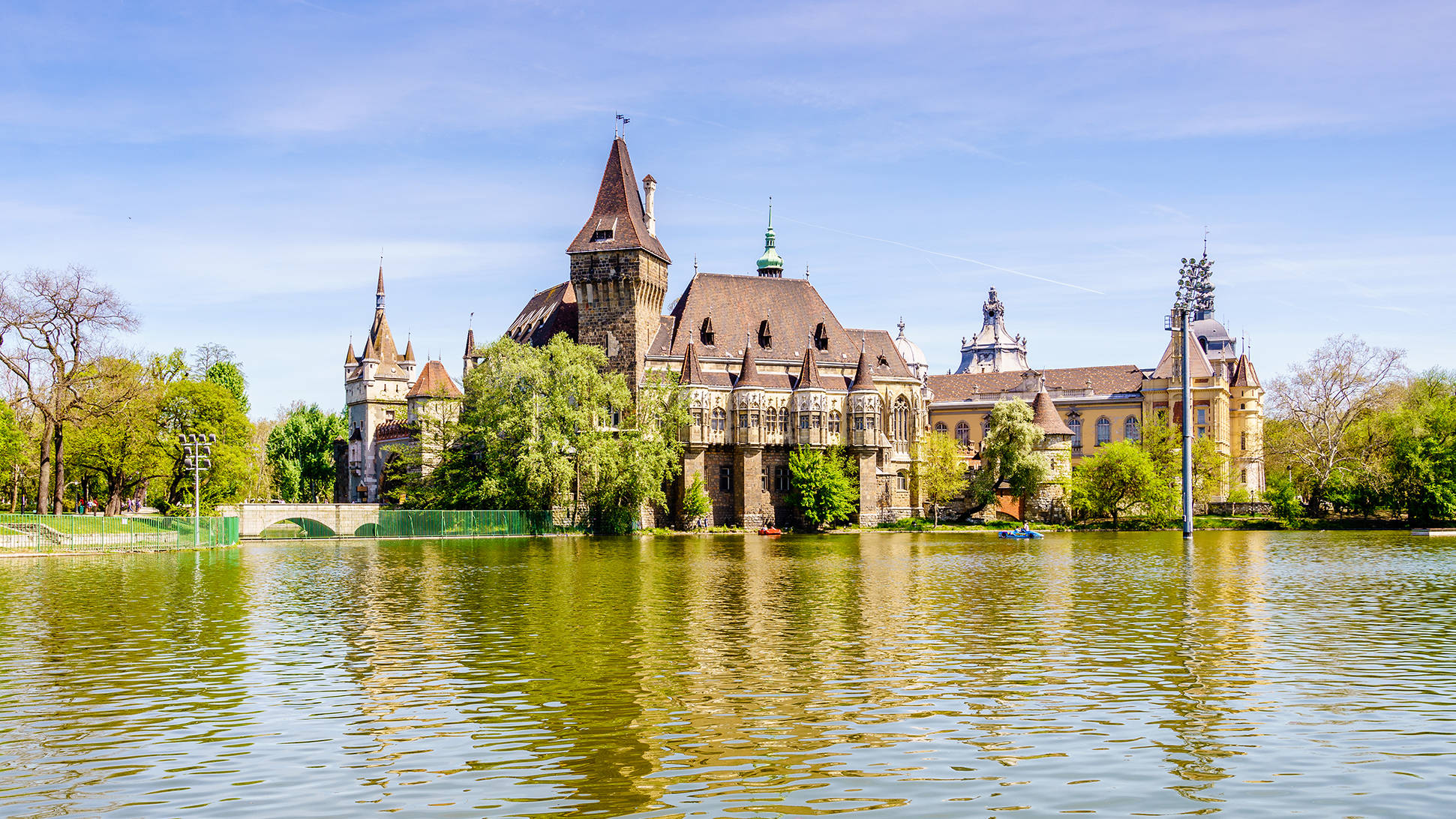
Vajdahunyad Castle
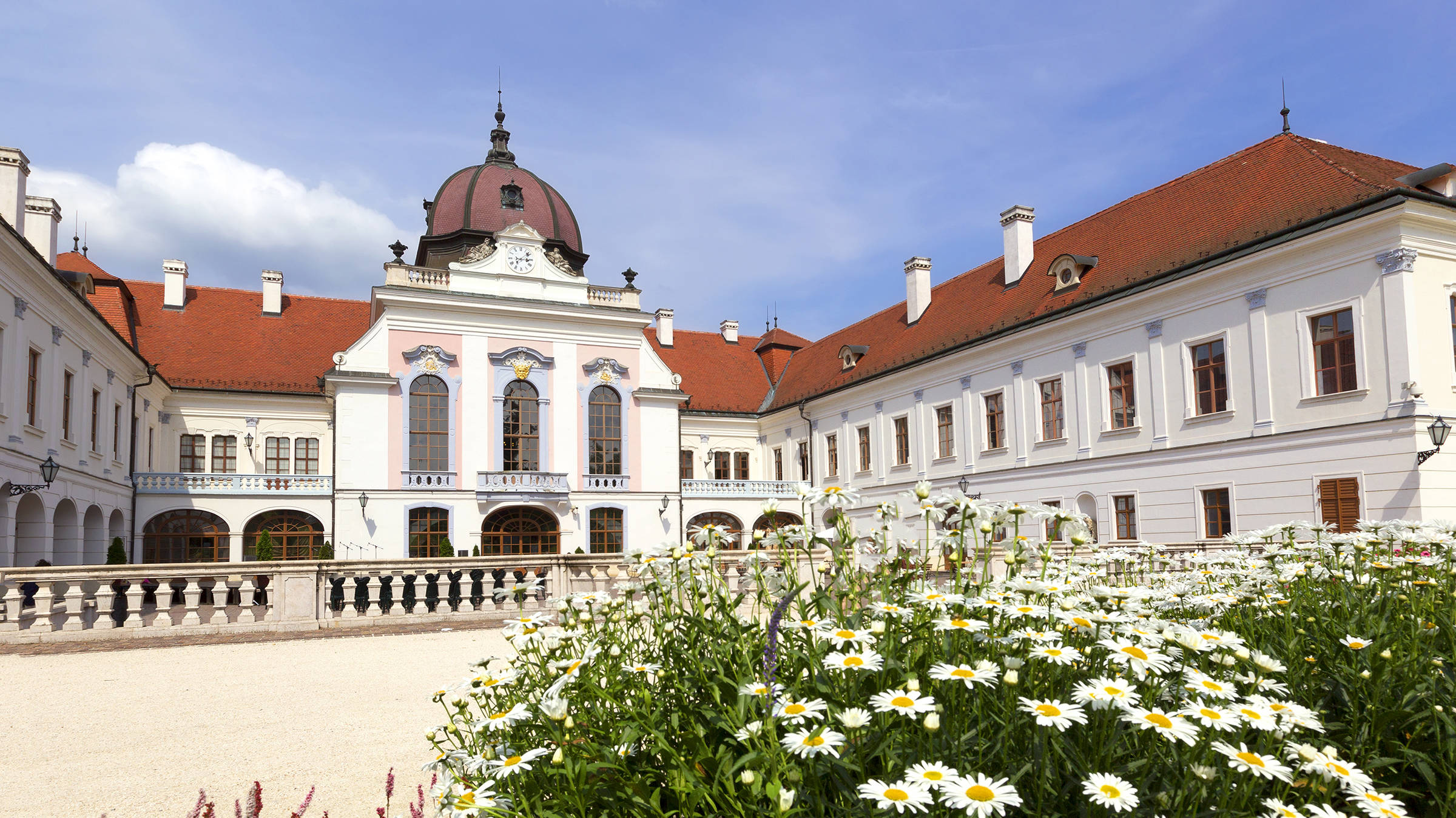
In addition to the mountainous surroundings, the picturesque Baroque town and artists’ colony Szentendre and Empress Sissi’s favourite castle in Gödöllő are ideal for excursions into the surrounding area. A boat trip around the Danube bend to Esztergom also makes for a wonderful day trip.
Experience the diversity and beauty of the Hungarian capital and spend a budget-friendly night in the new H2 Hotel Budapest!
Tourist attractions close to the H2 Hotel Budapest

Set out and explore Budapest...
The new H2 Hotel Budapest lies in the centre of Pest, on the eastern side of the Danube, just 500 metres from the Chain Bridge. The suspension bridge is the oldest and the most famous bridge spanning the Danube in Budapest. Its construction was proposed by the reformer, Count István Széchenyi, who reputedly had to wait for a whole week to get to the other side of the Danube. The design was produced by William Tierney Clark in 1839, and the bridge was constructed in 1849. For a long period of time it was the only bridge downstream of Regensburg.
» Continue to Location & surroundings
The Fishermen's Bastion: for a photo op over the Danube
The Fishermen's Bastion on Castle Hill is a neo-Romanesque construction with seven watchtowers. The bastion, which was erected in 1895 at the location of the former fish market, has become a city landmark and a popular meeting point, with a café and panoramic terrace. The view over the river and the Pest district is not to be missed! From the H2 Hotel Budapest, you can walk there in about 20 minutes.

The Matthias Church - walk in the footsteps of Empress Sissi
The Matthias Church is the oldest church on Castle Hill. Its origins date back to the 13th century. Striking features include the two, very different towers, and the rich decorative paintings in the interior. In 1867, Franz Joseph I. and Empress "Sissi" were crowned king and queen of Hungary here. From the H2 Hotel Budapest, you can get there in about 20 minutes on foot.

Széchenyi Thermal Bath – bathe in style
Budapest is famous for its thermal baths. The Gellért bath and the Széchenyi thermal bath, in particular, are architectural works of art, with a long-standing tradition. The Széchenyi Thermal Bath, with its expansive and palatial complex dating back to 1913, is the largest spa in Europe's largest spa city. It has 15 indoor and outdoor swimming pools, saunas, physiotherapy treatment options and massage offerings. From the H2 Hotel Budapest, you can get there in around a quarter of an hour with the Metro or bus.

Parliament Building - a palace to represent the people
The impressive, neo-Gothic Parliament Building, with its numerous towers, stands directly on the banks of the Danube. The huge, palatial building was constructed between 1885 and 1904, and is the seat of parliament. The crown jewels are stored in the imposing domed hall. From the H2 Hotel Budapest, the visitors' centre is just 15 minutes walk. There are tours in German.

Picturesque Castle District and impressive Buda Castle palace complex
On the other side of the Chain Bridge lies the Castle District. It arose out of the historic centre of Buda, on the western side of the Danube. The streets are characterised mainly by Baroque buildings. The immense Buda Castle palace complex occupies the southern part of the Castle District, and towers over the Danube. The history of the royal palace dates back to the 13th century. Today, the History Museum, the National Gallery and the Ludwig Museum of Contemporary Art are housed there. From the H2 Hotel Budapest, you can walk there in around 20 minutes.

A pleasure for the senses: the Great Market Hall
The Great Market Hall is also worth a visit. It was built between 1894 and 1897, close to the Freedom Bridge and the Corvinus University. Even from the outside, the neo-Gothic façade, with its small tower and coloured roof tiles , is a real eye-catcher. But only when you set foot inside, does the size of the impressive steel construction really hit you. Marvel, wide-eyed, at the window displays, pick up a souvenir, or treat yourself to a fresh Lángos fried bread with garlic. The Market Hall is 25 minutes' walk from the H2 Hotel Budapest, or a quarter of an hour on the tram.

Andrássy avenue
The famous, dead straight boulevard between the city centre and “Hősök tere” is over 2.5 kilometres long. It was designed as a major urban development project between 1871 and 1885 and was built on with richly equipped apartment buildings. The Hungarian State Opera and the “House of Terror”, a museum and memorial for the politically persecuted, are also located along the World Heritage-listed street. At “Hősök tere” stands the Millennium Monument, inaugurated in 1896 to mark the 1,000th anniversary of the land seizure, flanked by the Hall of Art and the Museum of Fine Arts.
» Continue to Location & surroundings